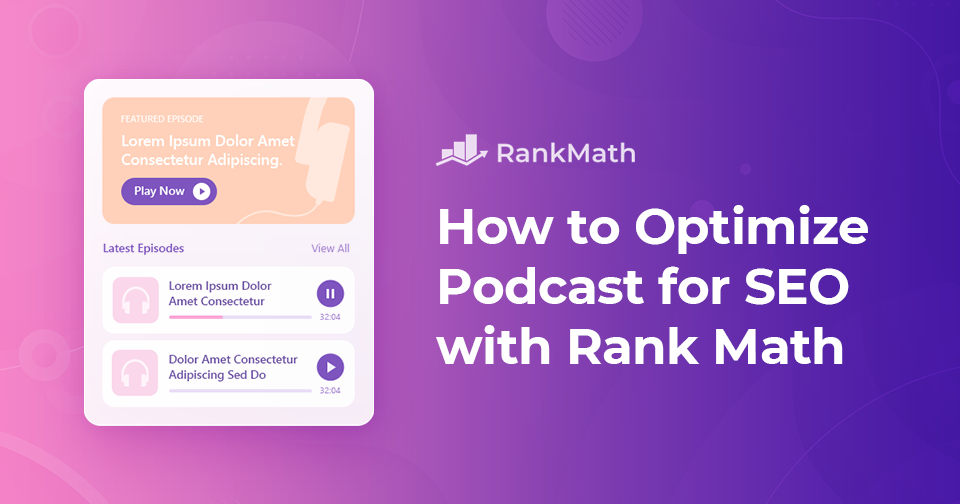If you’re creating a podcast, you’re already doing something powerful, building a deeper connection with your audience through your voice and ideas.
And you’re not alone. According to Statista, nearly 6 in every 10 U.S. consumers over the age of 12 listen to podcasts. That’s a huge and growing audience, but simply publishing episodes isn’t enough if people can’t find them.
By optimizing your podcast for search engines, you increase your chances of showing up in search results on Google, Apple Podcasts, Spotify, and beyond.
So, if you’re planning to explore this marketing channel, you’ll find what you need in this guide.
In this guide, we’ll take a look at:
- Why Should You Consider Podcasting?
- How to Create Your Own Podcast
- What Are the Podcast Requirements?
- How to Publish Your Podcast Channel & Episodes Using Rank Math
- How to Optimize Podcast for SEO
- How to Submit Your Podcasts to Podcast Distribution Platforms
- What’s Next? – Grow Your Podcast Audience
1 Why Should You Consider Podcasting?
First, podcasting helps you share your voice and ideas in a way that feels real and personal. When the audience listen to your episodes, you’re quite literally in their ears. That creates a stronger connection than a quick social post or even a blog article. You can talk directly to your audience, tell your story, and let them hear your passion, humour, and personality, all things that text alone can’t fully capture.
Second, podcasting gives you a chance to build authority in your field. You can share your knowledge, interview interesting guests, or dive into topics that matter to you and your listeners. Over time, the audience starts to see you as a go-to voice in your niche, which can open doors to collaborations, speaking opportunities, and even business growth.
Plus, it’s surprisingly accessible. You don’t need a fancy studio or expensive equipment to get started. I’ve seen people launch successful podcasts right from their living room or even their car.
And here’s something I love about podcasting: it isn’t about being perfect. It’s about being real. Your audience often connects more with your authenticity than with flawless editing or scripted delivery.
And if you’re ready to grab the mic, let’s explore what it takes to launch your podcast and get it off the ground!
2 How to Create Your Own Podcast
There are plenty of in-depth guides out there that walk you through every little detail of podcasting, from choosing your topic to mastering the recording process. But if you’re just looking for a quick overview to get started, here’s a simplified roadmap you can follow:
- Choose a topic you care about: Start with something you’re genuinely interested in. Use tools like Google Trends to see what your audience is searching for; this helps you align your passion with their curiosity.
- Pick a memorable podcast name: Your podcast name is your brand. Make it unique, easy to remember, and something your listeners can connect with.
- Write a clear and engaging description: Let your potential listeners know what they’ll get from your show. Think of it as your podcast’s elevator pitch.
- Decide on your format: Will you go solo? Host interviews with guests? Run panel discussions? Pick a format that suits your style and keeps your content fresh.
- Design your artwork and choose music: Your visuals and intro music set the tone. Choose ones that match your topic and help build your brand identity.
- Get your equipment and software: You don’t need to break the bank, but invest in a decent mic and use reliable recording and editing tools.
- Plan your episodes and start recording: Outline your scripts, practice your delivery, and hit record! The more you do it, the better you’ll get.
Once you have your first few episodes ready, you’re well on your way.
3 What Are the Podcast Requirements?
Once your podcast episodes are ready, you’ll need to host them somewhere, just like how your website needs hosting. You can use popular podcast hosting services like Buzzsprout, Libsyn, or Audioboom, or even host them on your own server if you prefer more control.
If you’re already using WordPress, plugins like Rank Math SEO make the process even easier. You can manage and host your podcast episodes directly from your WordPress dashboard, no need to juggle multiple platforms.

Now, you might be wondering, how will the audience find my podcast?
To reach your audience, you’ll need to distribute your podcast across platforms like Apple Podcasts, Spotify, and Google Podcasts. The more places your show appears, the more chances you have to be discovered.
Most platforms accept your podcast through an RSS feed, which is basically a standard way of sharing your episodes and show details. Once you submit your RSS feed, these platforms can automatically pull new episodes as you publish them.
You’ll also need cover artwork for your podcast. This acts as your visual identity. Most directories require a square image (1:1 ratio), at least 1400 x 1400 pixels in size.
With your hosting, RSS feed, and artwork in place, you’re all set to start distributing your podcast and building your audience.
4 How to Publish Your Podcast Channel & Episodes Using Rank Math
To publish your podcast channel, at first, you need to ensure you’ve Rank Math PRO installed and activated on your site (if you haven’t already subscribed to PRO, you can choose a plan of your choice from here).
Then navigate to Rank Math SEO → Dashboard → Modules and enable the Podcast and Schema (Structured Data) modules.
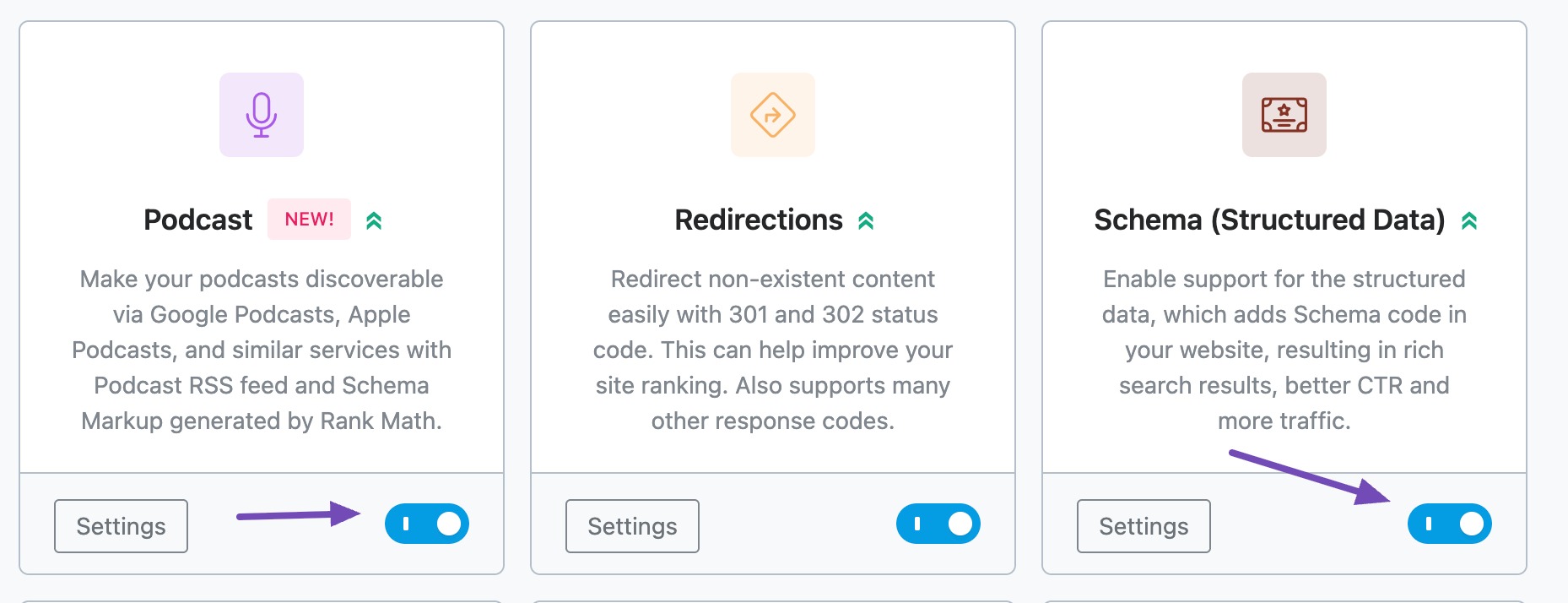
Then you can configure all the basic details of your podcast from Rank Math SEO → General Settings → Podcast. We have a detailed guide to help you configure these details.
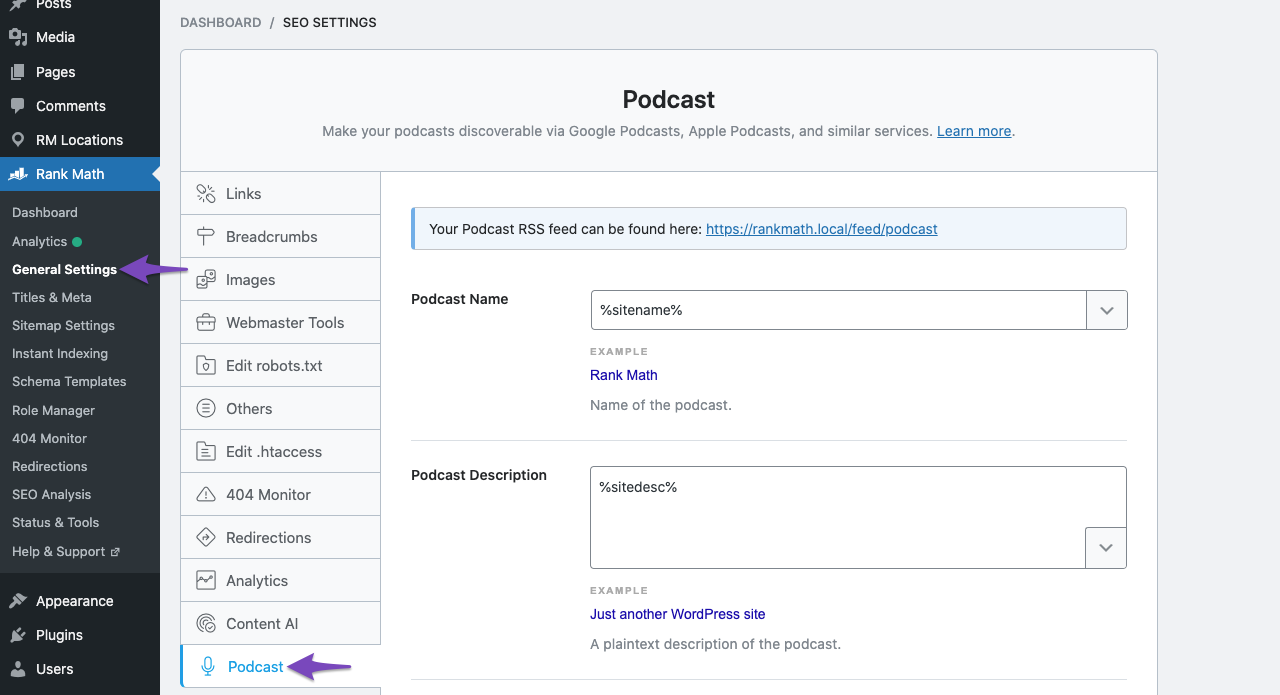
Once you’re done configuring, click the Save Changes button, and now we’re good to get started with uploading the podcast episodes.
Next, open a new post in your favourite WordPress editor and open the Schema Generator from Rank Math’s Meta box.
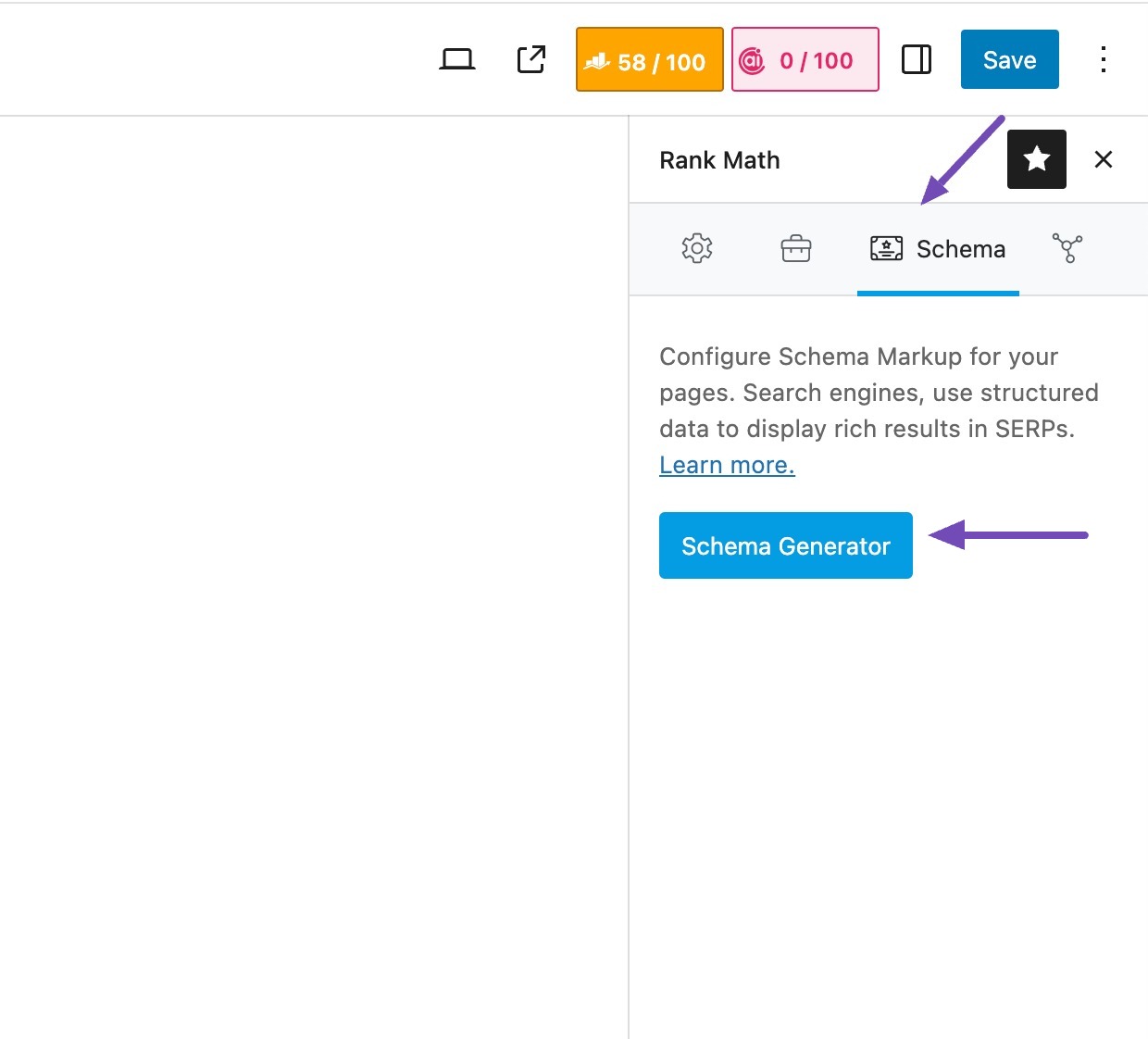
Then choose Podcast Episode Schema and start adding the details of the Podcast. If you’re unsure of what to fill in any of these fields, you can always refer to our Podcast Schema article.
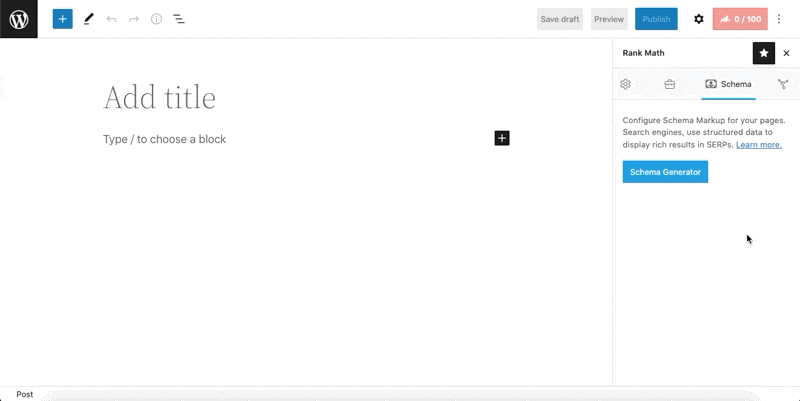
Once done, save the Schema for this post and add the Schema Block in Gutenberg to get the Podcast added to your post.
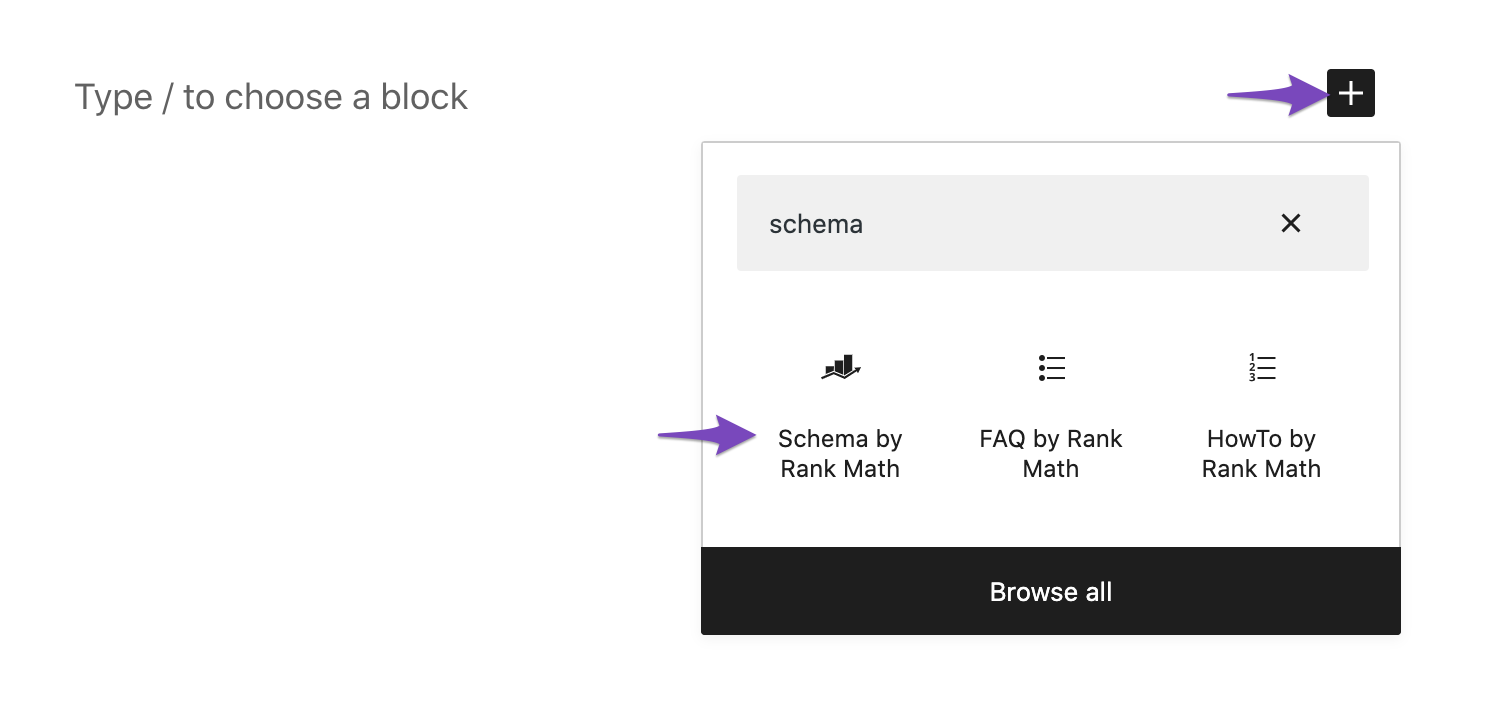
If you aren’t running WordPress Block Editor on your site, but anything else, we’ve always got you covered. Simply copy and paste the Schema shortcode inside your favourite editor to get the podcast added to the front end. The podcast would look similar to this:
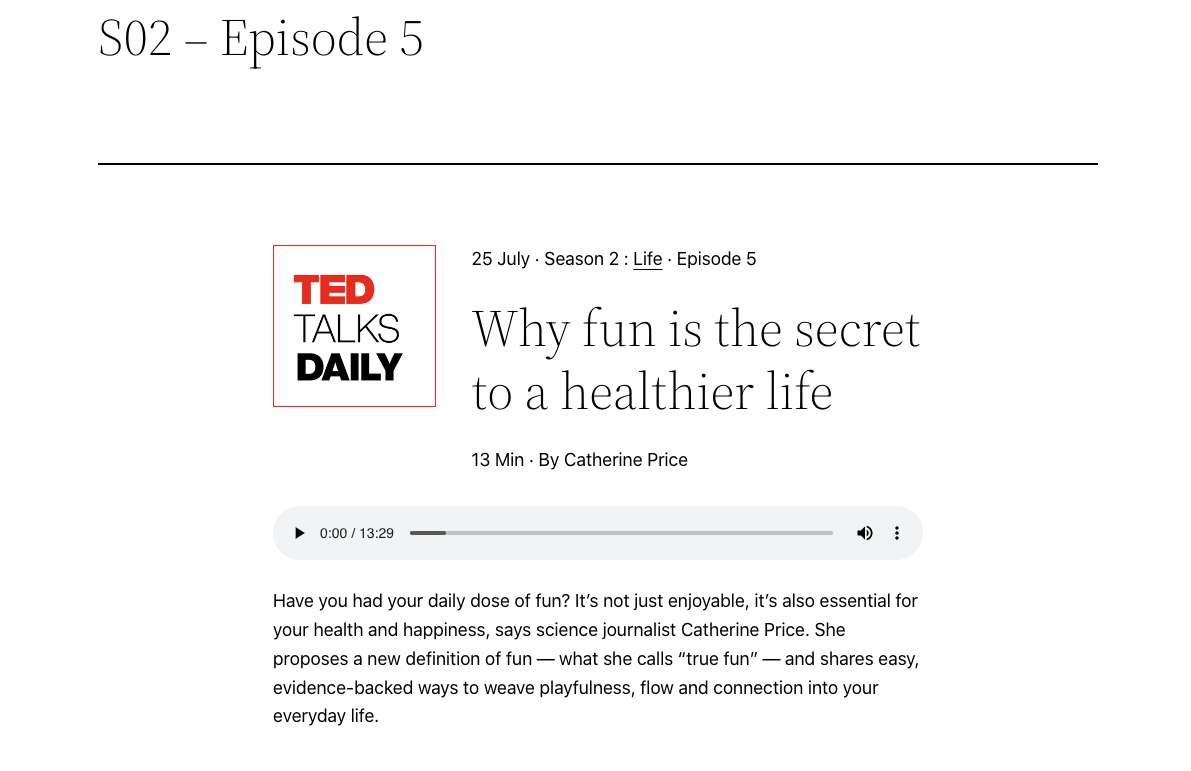
That’s it! You’ve successfully created a podcast channel and published your first Podcast Episode.
You can use our Podcast Episode Outline AI tool and take the guesswork out of podcast planning so you can focus on creating engaging, high-quality content.
5 How to Optimize Podcast for SEO?
Now that you know how to use Rank Math for podcasting, let’s dive into the details of making sure your podcast shows up where your audience is searching. Here’s how you can optimize your podcast for SEO step by step.
5.1 Have a Dedicated Page or Website for Your Podcast
You don’t have to create a separate website for your podcast, but it helps. Even if you keep your main website, having a dedicated podcast page makes it easier to:
- List all your episodes in one place
- Build a consistent brand presence
- Improve the overall experience for your audience
From a marketing perspective, it also helps you create stronger connections with listeners. For example, Google uses a branded page for its Search Off the Record podcast to showcase episodes and engage visitors.
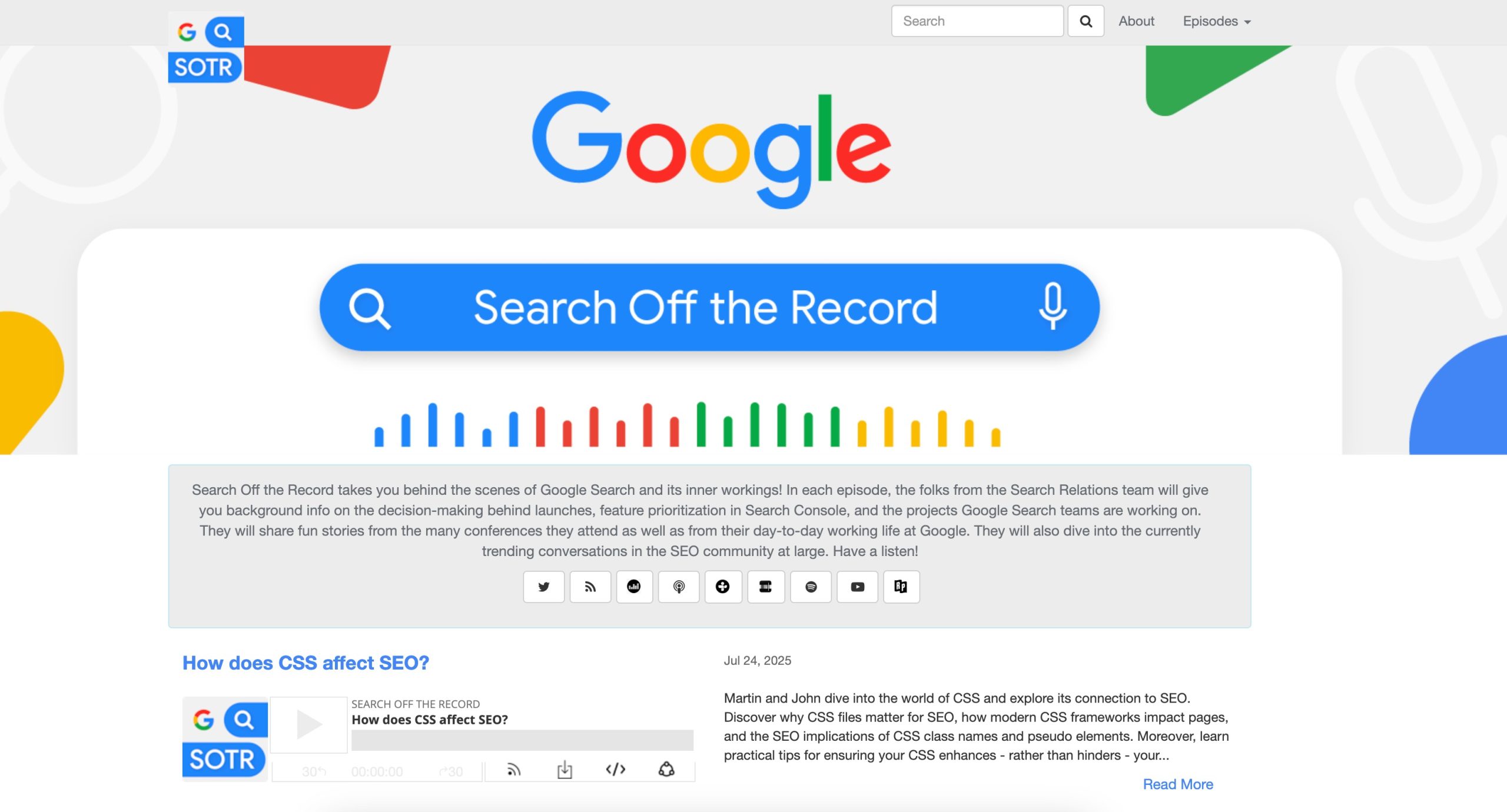
5.2 Craft Your Podcast Description
Your podcast description appears in your RSS feed and on most listening platforms, so make it count. A strong description should:
- Introduce you and any co-hosts or regular guests
- Clearly explain what your show is about
- Share who it’s for and what listeners will learn
- Be short and to the point, people won’t read long walls of text
- Include relevant keywords naturally so your podcast shows up in searches
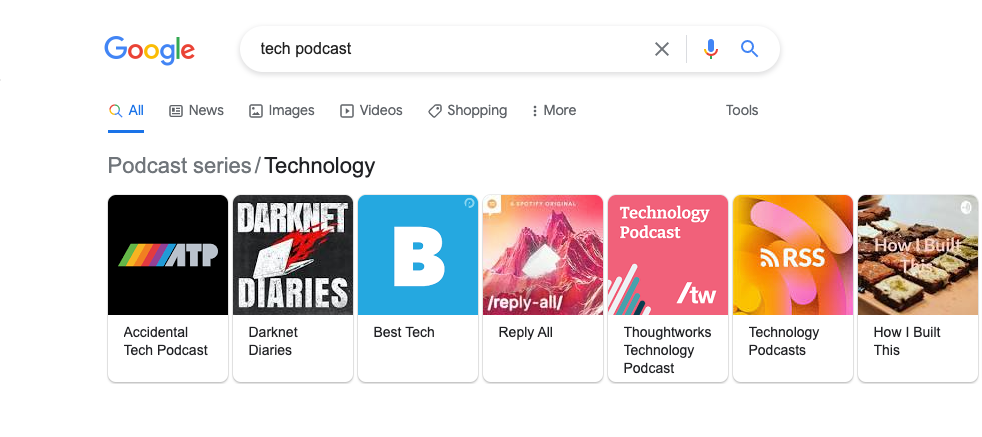
5.3 Syndicate Your Podcast to Google Podcasts and Other Services
There are dozens of podcast directories out there, and it can feel overwhelming to pick which ones to use. To narrow it down, ask yourself:
Where does my audience already listen to podcasts?
It could be Apple Podcasts, Spotify, Google Podcasts, Anchor, or something else. Once you know, submit your RSS feed to those platforms. The good news is you only need to do this once; after that, they’ll automatically fetch new episodes when you publish them.

If you’re not sure how to submit your RSS feed, don’t worry, we’ll walk you through it later in this guide.
5.4 Use Podcast Episode Schema Markup
Technically, submitting your Google-compliant RSS feed is enough for Google Podcasts. But adding structured data (Schema markup) makes it even easier for search engines to understand your content.
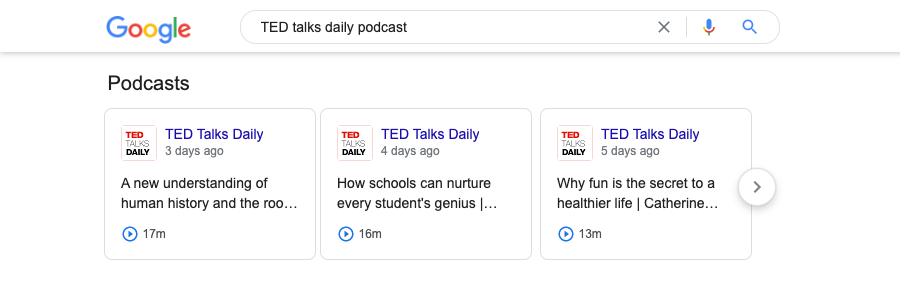
For that reason, Rank Math has a dedicated podcasting module with the ability to add PodcastEpisode Schema. So the structured data can better help search engines to understand your pages and also to help you rank for relevant queries.
5.5 Optimize Your Episode Titles
Each episode is an opportunity to target a specific topic (or keyword). And a well-optimized title for your episode not only makes your episode findable across various podcast directories but can help your episode pages rank for relevant keywords in search.
So it’s a win-win strategy. There aren’t any set guidelines for creating your Episode Titles, but some good practices include:
- Be short and concise
- Avoid losing space for obvious terms like ‘Season’, ‘Episode’, or your podcast name, as they are likely to appear once again on your podcast description and podcast details.
- Use keywords for your audience to find your episodes.
5.6 Use Transcriptions to Enhance SEO
Transcripts make your podcast accessible and create extra content for search engines to index. Surprisingly, only about 1% of podcasts provide transcripts right now, so this is a great chance to stand out.
For example, This American Life saw a 4.36% increase in inbound traffic after publishing transcripts of their episodes.
5.7 Focus on Episode-Specific Keywords
Do a bit of keyword research before each episode. Find out what terms your audience is looking for, then:
- Work those keywords naturally into your title and description
- Mention them during the episode itself
- Use them in your transcript and show notes
This makes your episodes more discoverable and relevant.
5.8 Create Dedicated Web Pages for Episodes
Build a separate page on your site for every episode. This gives you space to:
- Post show notes
- Include transcriptions
- Add helpful links and resources
Each page adds fresh content to your website and gives search engines more to index.
5.9 Optimize Your Show Notes
Think of your show notes like YouTube video descriptions; they help listeners get the gist of the episode and give search engines more context.
A good set of show notes should include:
- A summary of the episode
- Guest introductions and bios
- A transcript (if you have one)
- Any relevant links you mentioned
- Social media links for sharing
- Keywords, used naturally (avoid stuffing)
- A clear call to action, like subscribing, checking out your products, or joining your newsletter
6 How to Submit Your Podcasts to Podcast Distribution Platforms
If you’ve followed along so far, you should already have at least one episode published and your Podcast RSS feed ready. Now it’s time to distribute your show across major podcast platforms so your audience can start tuning in.

The process is similar for most directories; you just need to submit your RSS feed and verify ownership. Let’s walk through how to submit your podcast to the biggest platforms: Google Podcasts, Apple Podcasts, and Spotify.
6.1 Submit Your Podcast to YouTube
To start delivering your podcast episodes through an RSS feed, open YouTube Studio, navigate to Content, and click on Podcasts. You can create a new podcast by clicking New podcast. If you have already connected, find the podcast you want to connect to, hover over it, and click Details.
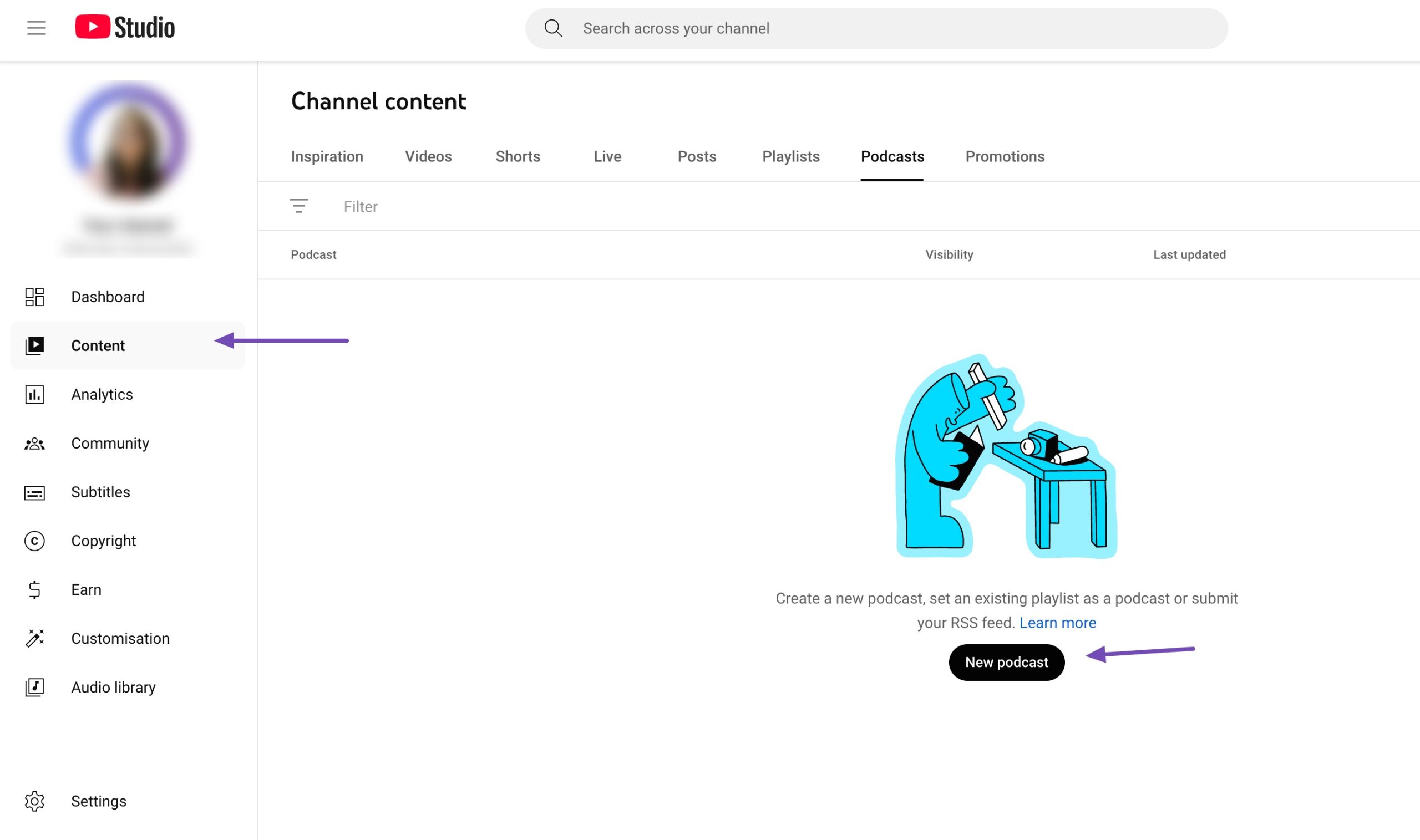
On the podcast details page, scroll to the RSS settings section and click Submit RSS feed. Then add your Podcast RSS feed that we’ve just created earlier using Rank Math.

Verify the ownership and check the visibility settings.
6.2 Submit Your Podcast to Apple Podcasts
To get your podcast on Apple Podcasts, head over to the Apple Podcasts Connect and log in with your Apple ID. You can always create and activate one if you don’t have an Apple ID.
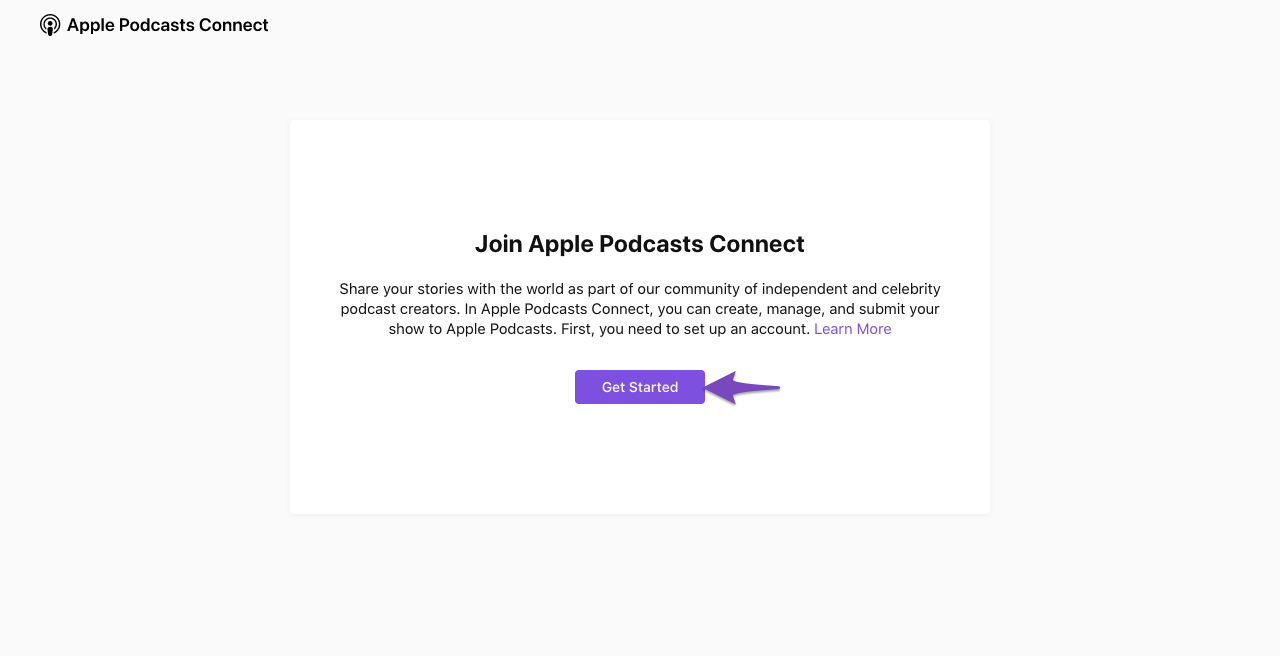
After logging in to the Apple Podcast Connect, choose the Add Show option that appears at the centre for adding the podcast.
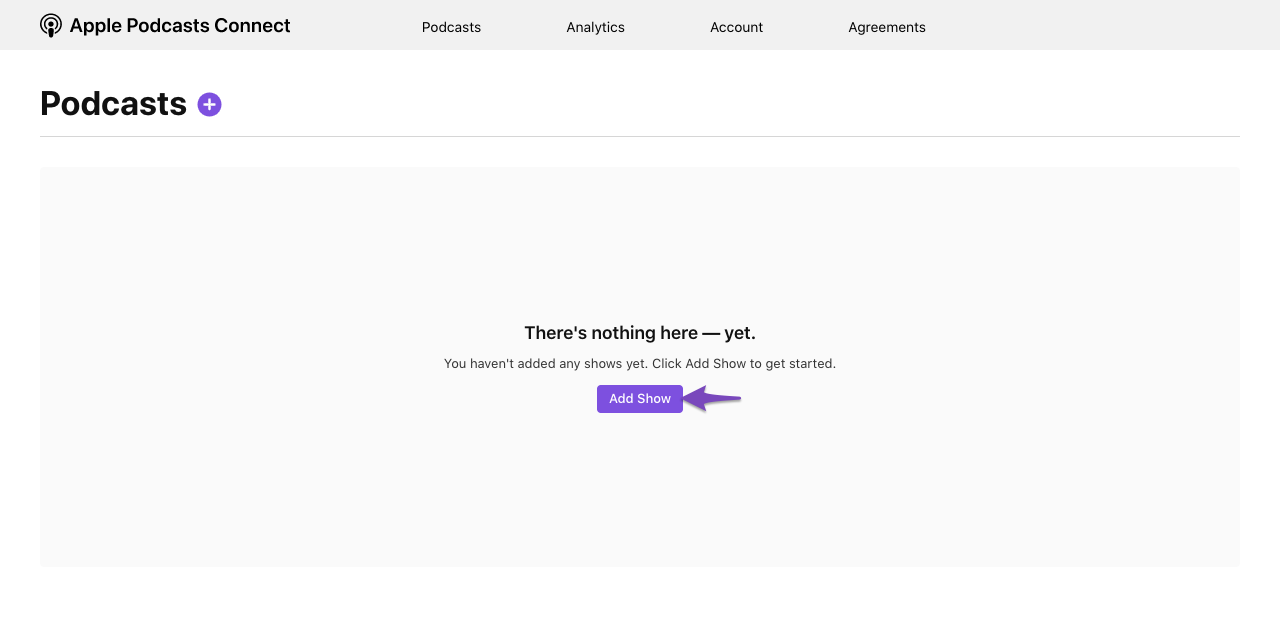
Then a pop-up would appear asking you to choose the Show type. Since we have the RSS feed created and readily available, we will proceed with the ‘Add a Show with an RSS Feed‘ and then move on to the next screen.
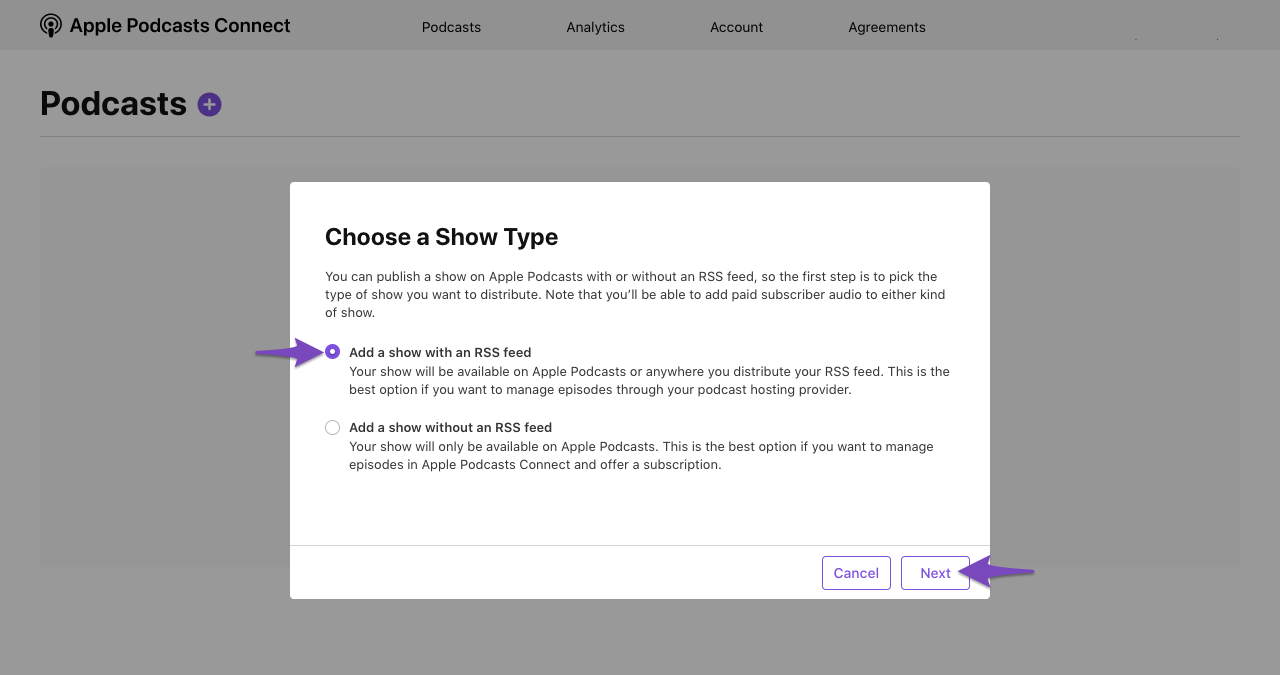
Then add your Podcast RSS feed that we’ve just created earlier using Rank Math.
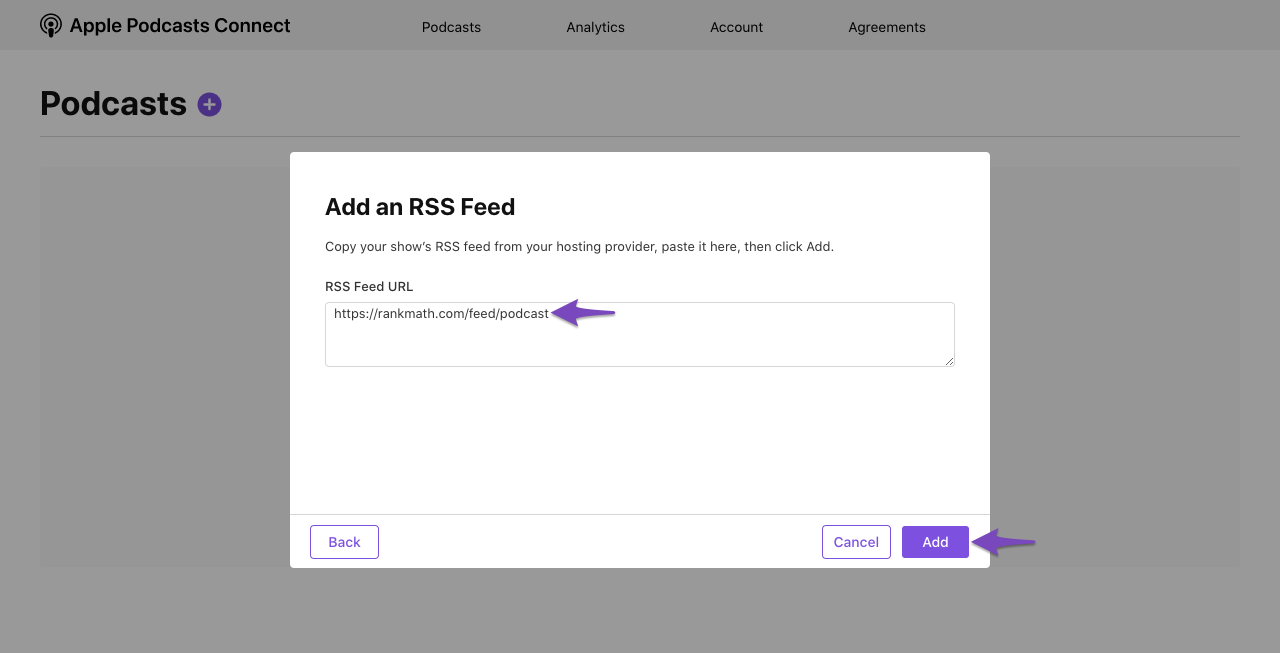
On the next page, wait for a few moments for Apple to fetch the details of your podcast. Once done, you can review the podcast information. Finally, save and publish your podcast.
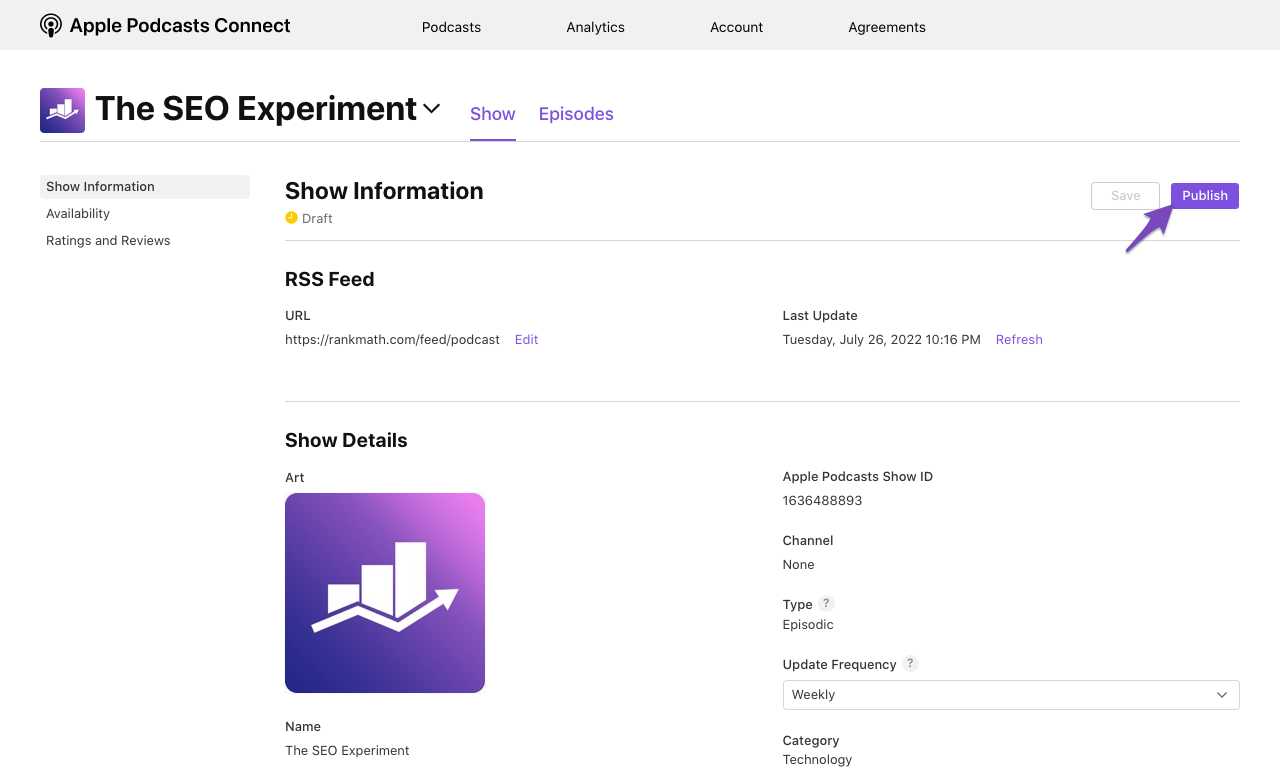
That’s it! Now your podcast will be published, and you can share your podcast link with your listeners.
6.3 Submit Podcast to Spotify
To submit a podcast to Spotify, head over to Spotify for Podcasters and log in to your account. If you haven’t already registered, you can do that easily from their platform.
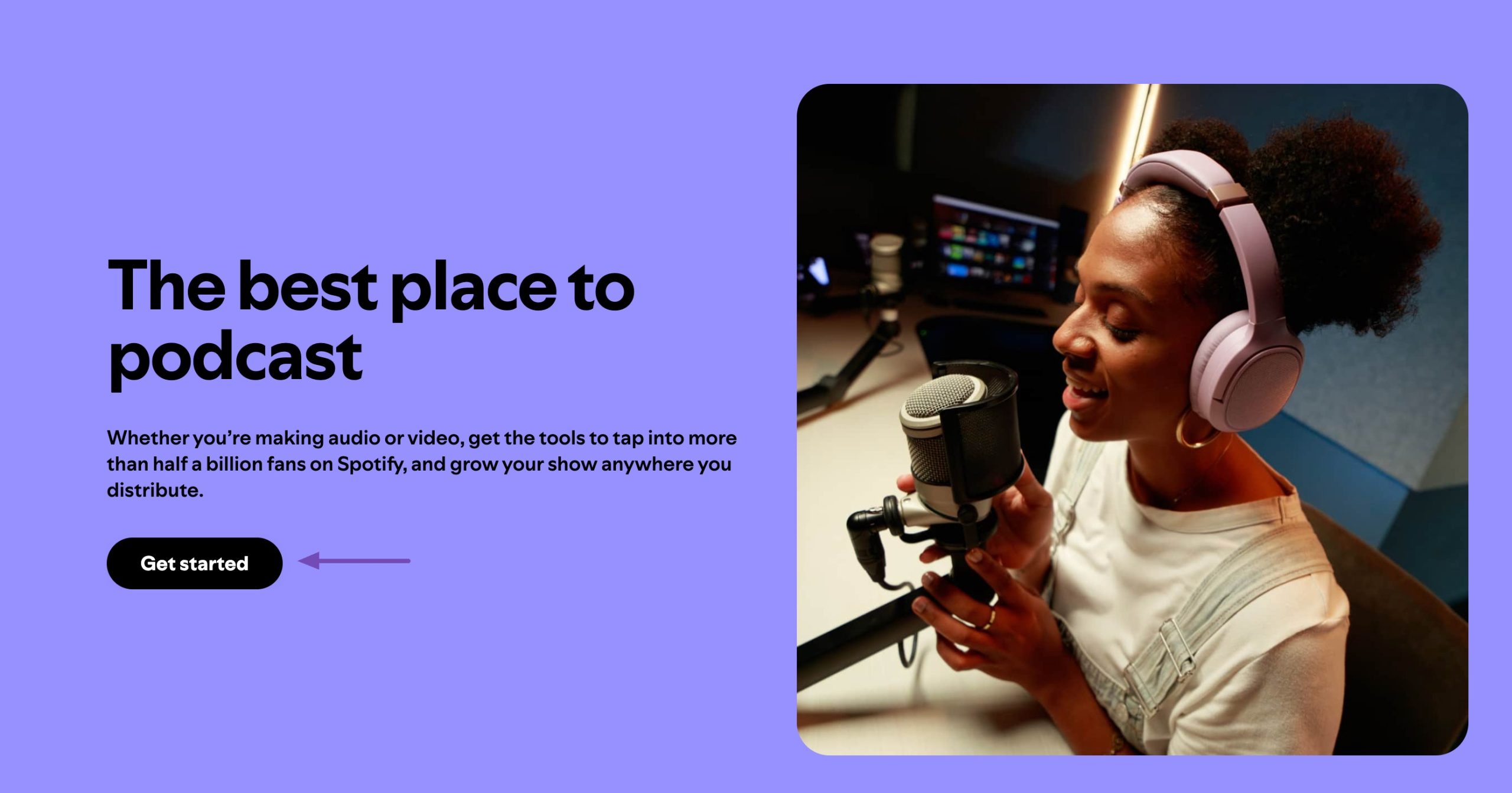
Now, get started with adding your podcast feed.
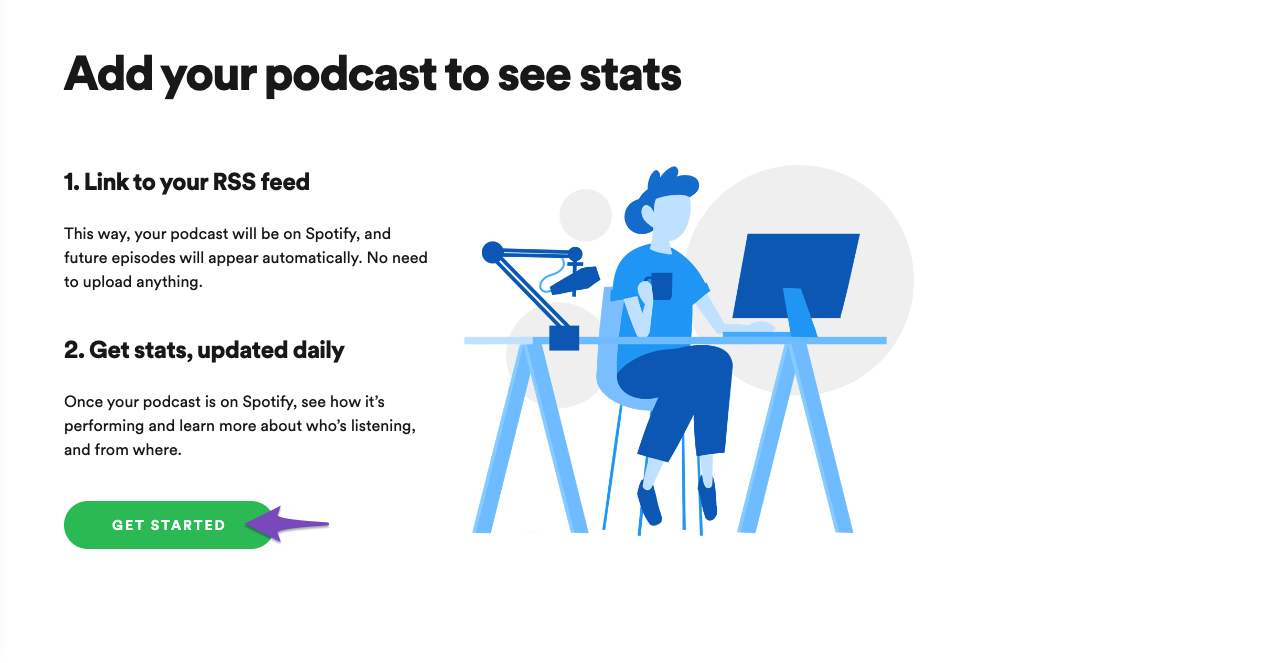
Add the Podcast RSS Feed that Rank Math has generated and proceed to the next page.
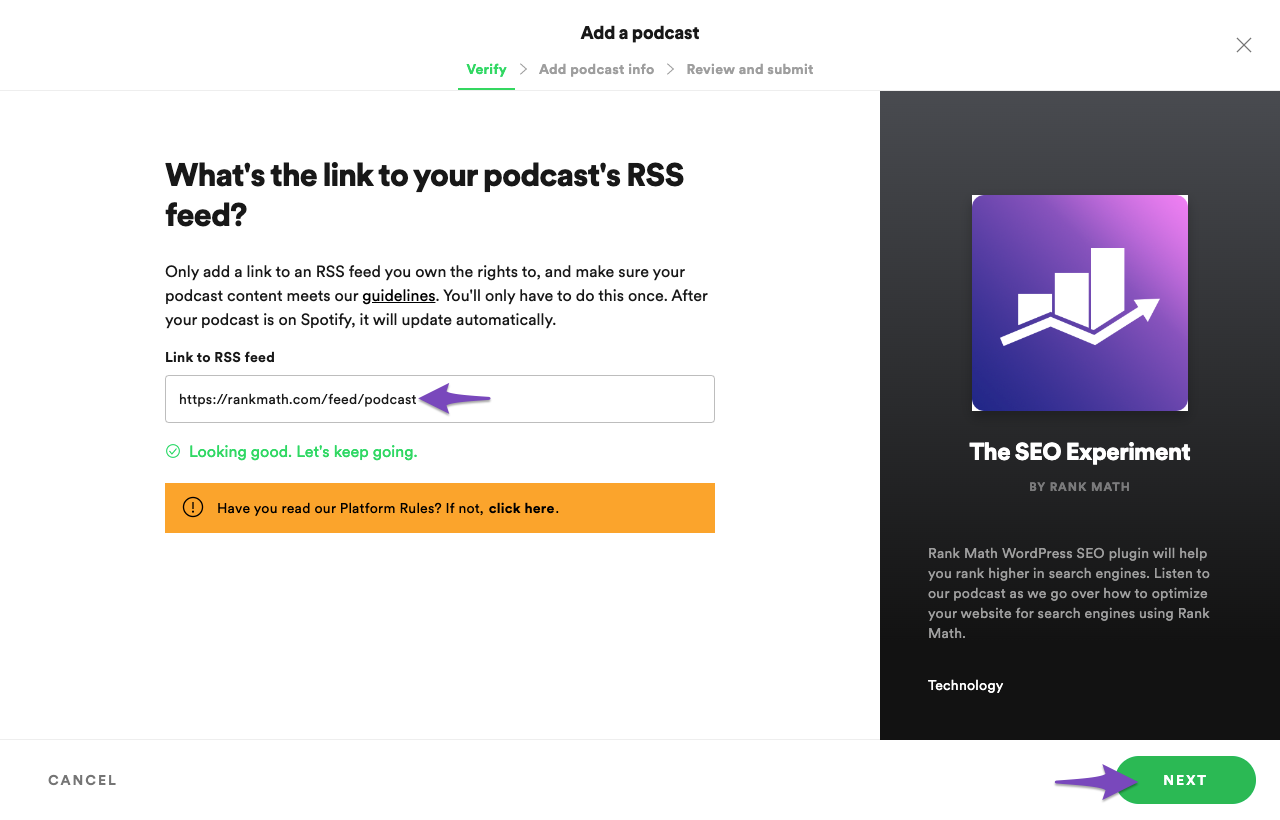
In the next step, Spotify will send a verification code to the email address you’ve added to the Podcast in Rank Math.
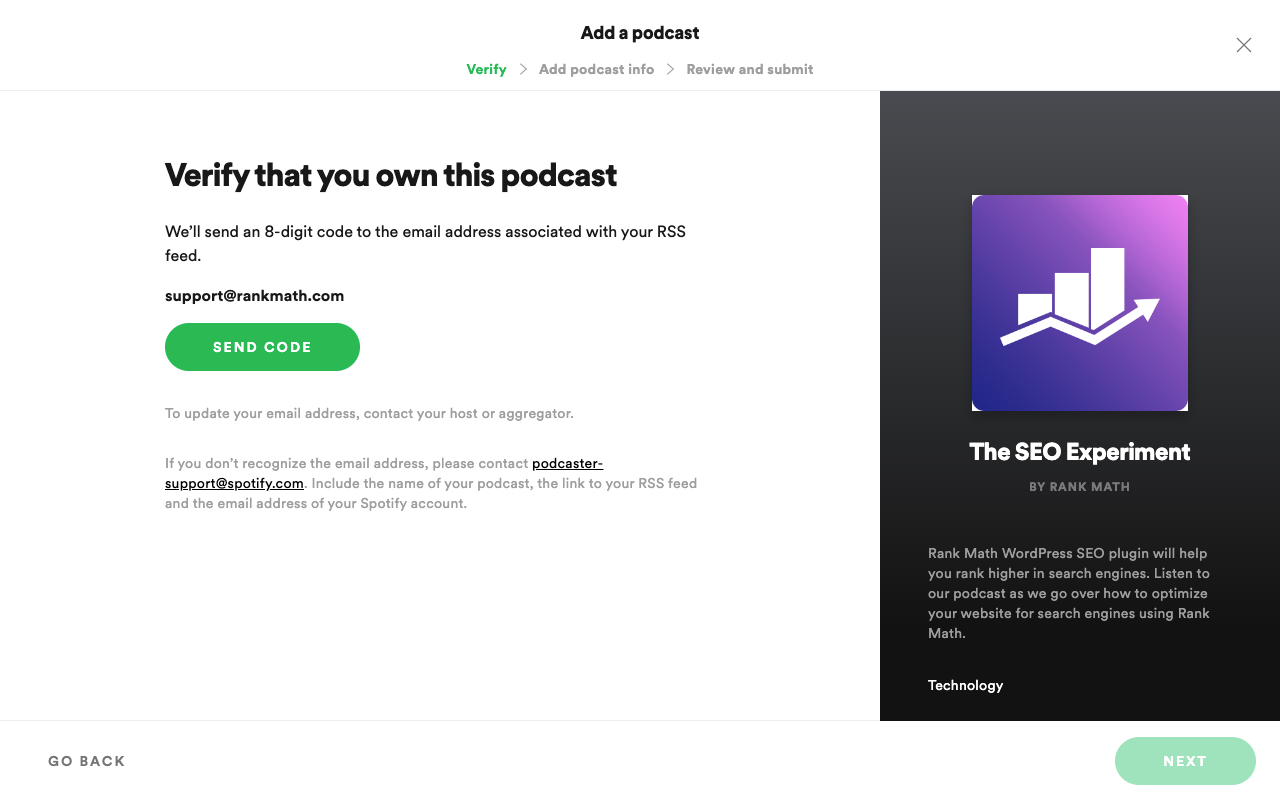
On the next screen, verify the code and proceed to enter the details of your Podcast.
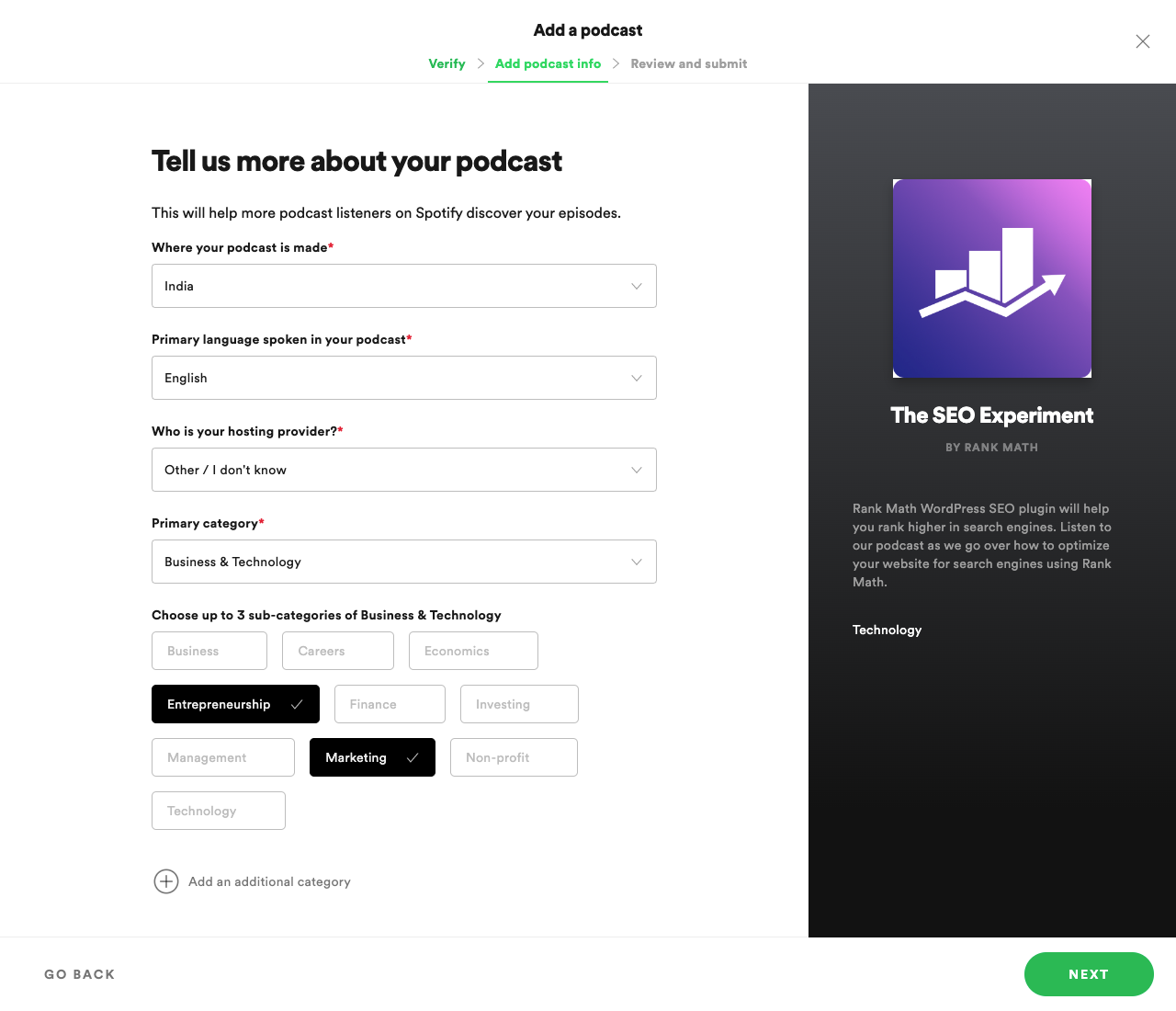
Then review the details you’ve entered and finally submit your feed.

That’s it. You have successfully submitted the podcast, and now it will take a few hours for the podcast to be available for listeners on Spotify.
7 What’s Next? – Grow Your Podcast Audience
And that’s it, you’ve successfully launched your podcasting station and distributed your show across major platforms for your audience to enjoy.
This guide focused mainly on the technical setup and SEO optimization. But remember, great content is just as important, if not more. If you want to grow your audience and rise in the charts, you’ll need to consistently deliver engaging, high-quality episodes that keep listeners coming back.
Do you have any questions about growing your podcast audience or need any help in setting up a podcast station using Rank Math? Tweet @rankmathseo. 💬
